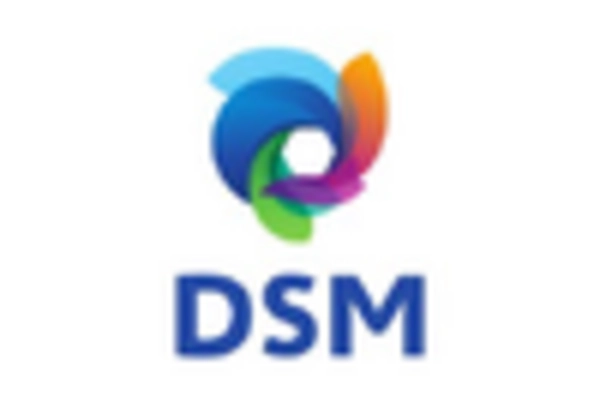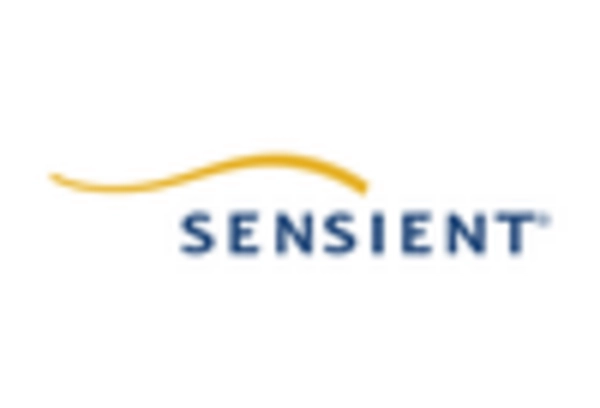Rising Demand for Nutraceuticals
The micro encapsulation market in Europe is experiencing a notable surge in demand for nutraceuticals, driven by an increasing consumer focus on health and wellness. This trend is reflected in the growing popularity of dietary supplements and functional foods, which are often enhanced through micro encapsulation techniques. The market for nutraceuticals in Europe is projected to reach approximately €30 billion by 2026, indicating a robust growth trajectory. Micro encapsulation plays a crucial role in improving the stability and bioavailability of active ingredients, thereby enhancing product efficacy. As consumers become more health-conscious, the micro encapsulation market is likely to benefit from this shift, as manufacturers seek innovative solutions to meet the evolving needs of health-oriented consumers.
Growth of the Personal Care Sector
The personal care sector in Europe is witnessing a significant expansion, which is positively influencing the micro encapsulation market. Consumers are increasingly seeking products that offer enhanced performance and longer-lasting effects, leading to a rise in the use of micro encapsulation technologies in cosmetics and skincare. The European personal care market is projected to reach €80 billion by 2025, with micro encapsulation playing a pivotal role in delivering active ingredients effectively. This trend indicates that the micro encapsulation market is poised for growth, as manufacturers strive to meet the demands of a discerning consumer base that prioritizes quality and efficacy in personal care products.
Advancements in Food Preservation Techniques
Innovations in food preservation are significantly impacting the micro encapsulation market in Europe. The ability to extend shelf life while maintaining product quality is increasingly important in the food industry. Micro encapsulation technologies are being utilized to protect sensitive ingredients from degradation, thus ensuring that food products retain their nutritional value and flavor. The European food preservation market is expected to grow at a CAGR of around 5% over the next five years, which could further drive the adoption of micro encapsulation methods. This trend suggests that the micro encapsulation market will continue to evolve, as food manufacturers increasingly rely on these technologies to meet consumer expectations for freshness and quality.
Increased Investment in Research and Development
Investment in research and development (R&D) within the micro encapsulation market in Europe is on the rise, driven by the need for innovative solutions across various industries. Companies are allocating substantial resources to explore new micro encapsulation techniques and applications, which could lead to breakthroughs in product formulation and delivery systems. The European R&D expenditure in the food and pharmaceutical sectors is expected to grow by approximately 4% annually, suggesting a robust commitment to innovation. This trend may enhance the micro encapsulation market, as advancements in technology could lead to improved product offerings and increased market competitiveness.
Regulatory Support for Innovative Packaging Solutions
The micro encapsulation market in Europe is likely to benefit from increasing regulatory support aimed at promoting innovative packaging solutions. European regulations are becoming more favorable towards sustainable and efficient packaging methods, which often incorporate micro encapsulation technologies. This shift is expected to enhance product safety and reduce waste, aligning with the broader sustainability goals of the European Union. As a result, the micro encapsulation market may see a rise in investment and development of new applications that comply with these regulations. The potential for growth in this sector is substantial, as companies seek to innovate while adhering to regulatory standards.


















Leave a Comment